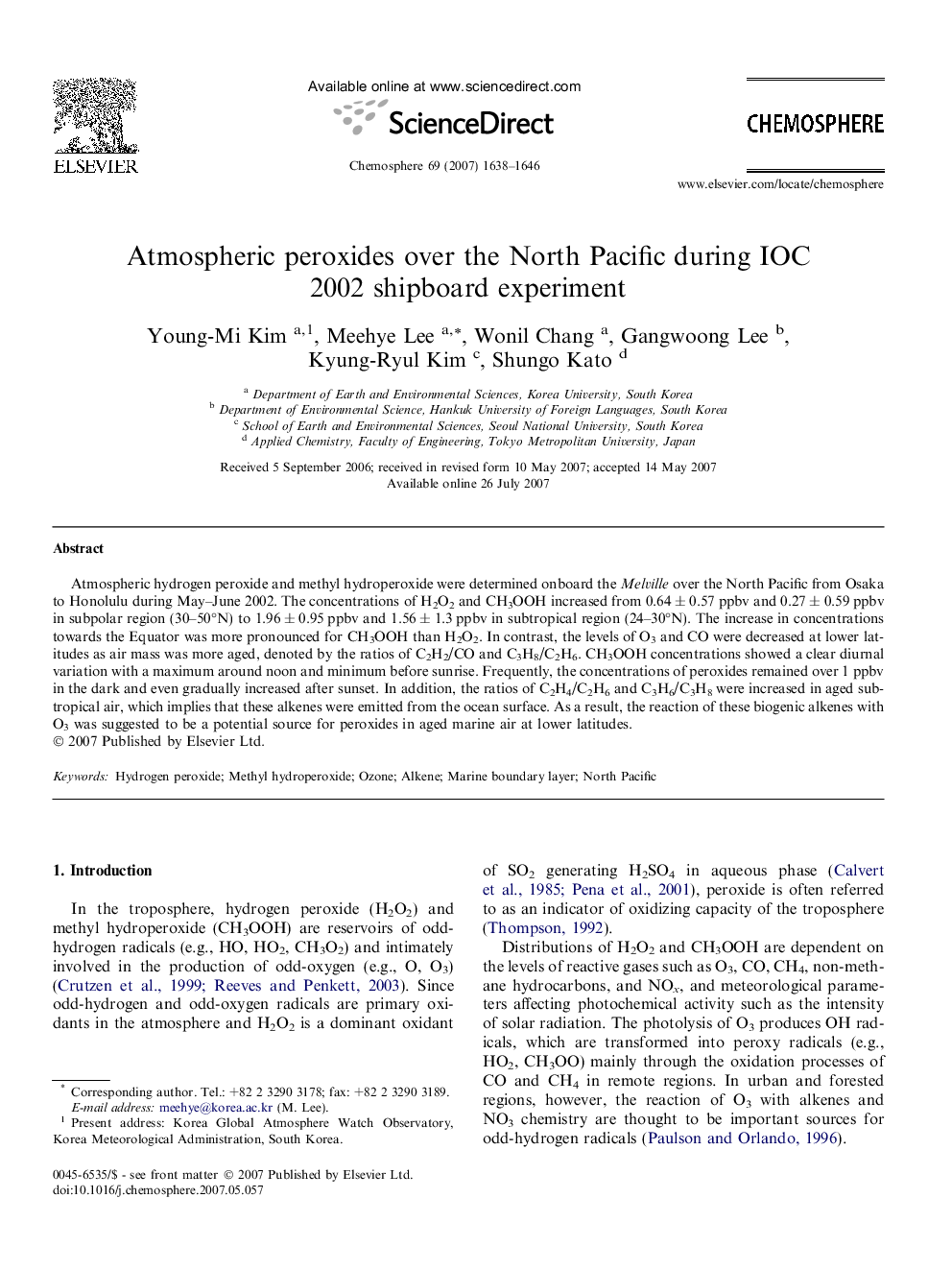| Article ID | Journal | Published Year | Pages | File Type |
|---|---|---|---|---|
| 4414532 | Chemosphere | 2007 | 9 Pages |
Atmospheric hydrogen peroxide and methyl hydroperoxide were determined onboard the Melville over the North Pacific from Osaka to Honolulu during May–June 2002. The concentrations of H2O2 and CH3OOH increased from 0.64 ± 0.57 ppbv and 0.27 ± 0.59 ppbv in subpolar region (30–50°N) to 1.96 ± 0.95 ppbv and 1.56 ± 1.3 ppbv in subtropical region (24–30°N). The increase in concentrations towards the Equator was more pronounced for CH3OOH than H2O2. In contrast, the levels of O3 and CO were decreased at lower latitudes as air mass was more aged, denoted by the ratios of C2H2/CO and C3H8/C2H6. CH3OOH concentrations showed a clear diurnal variation with a maximum around noon and minimum before sunrise. Frequently, the concentrations of peroxides remained over 1 ppbv in the dark and even gradually increased after sunset. In addition, the ratios of C2H4/C2H6 and C3H6/C3H8 were increased in aged subtropical air, which implies that these alkenes were emitted from the ocean surface. As a result, the reaction of these biogenic alkenes with O3 was suggested to be a potential source for peroxides in aged marine air at lower latitudes.
